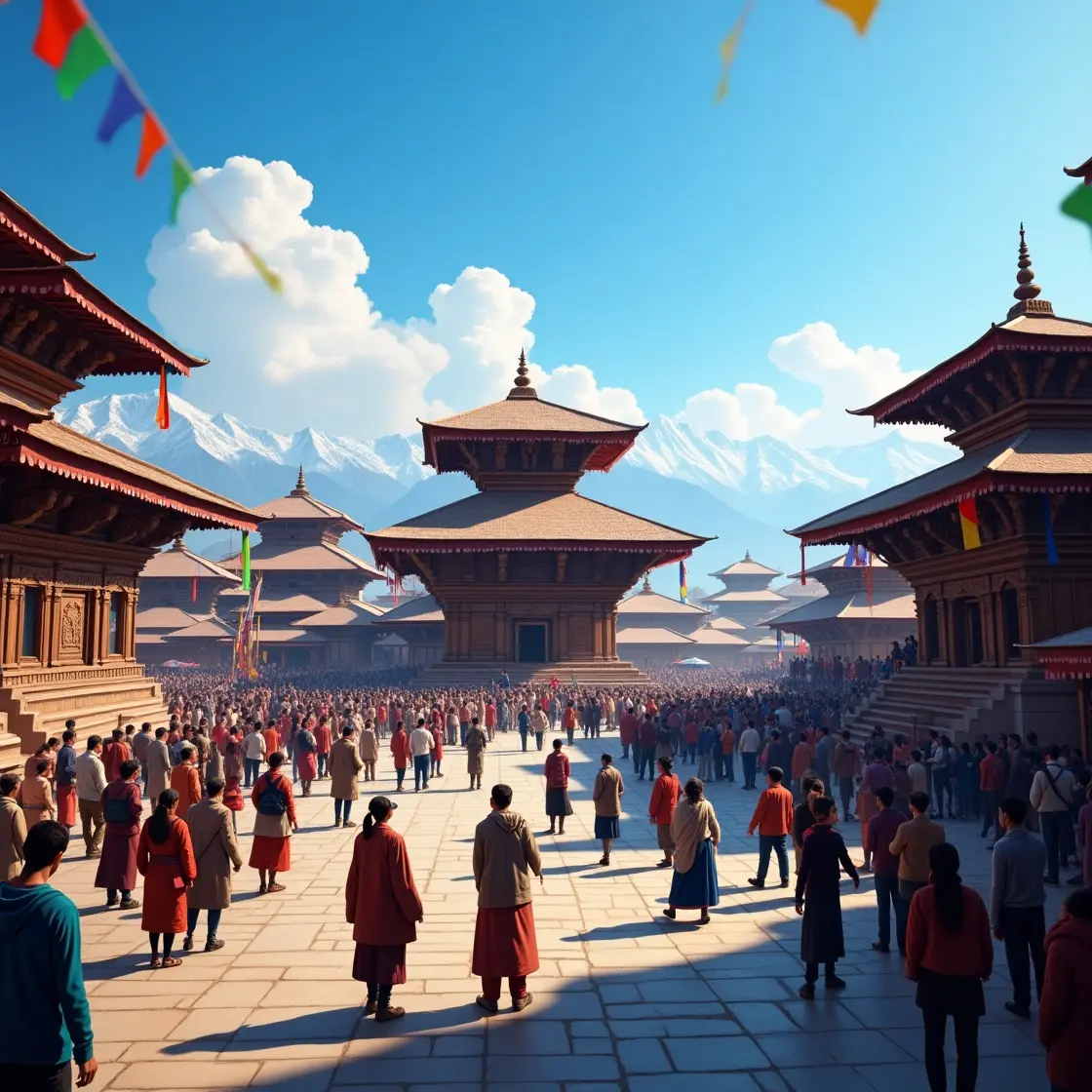1. Introduction: A Living Museum in the Heart of Kathmandu
Kathmandu Durbar Square is more than a historical landmark—it's a vibrant, living part of the city. Once the political and cultural hub of Nepal’s royal dynasties, the square continues to reflect the grandeur of the past. It invites travelers to step back in time and witness the legacy of Nepal’s monarchy through its preserved architecture and traditions.

2. Looking Back: The Early History of Kathmandu Durbar Square
This ancient square traces its origins to the Malla period (12th–18th century), when it thrived as a center for governance, craftsmanship, and religious expression. After Nepal’s unification, the Shah kings also made it their royal seat. Today, the square stands as a testimony to Nepal's rich, layered history, where each structure tells a story of power, devotion, and culture.
3. Royal Monuments That Speak of Glory
Several remarkable buildings within the square showcase its royal heritage:
- Hanuman Dhoka Palace: The former royal residence of both Malla and Shah rulers, named after the Hindu deity Hanuman, whose statue stands at the entrance as a protector.
- Taleju Temple: A majestic three-tiered shrine dedicated to Goddess Taleju, revered by the royal family and accessible only to Hindus.
- Kumari Ghar: The residence of the Living Goddess (Kumari), a young girl believed to be the earthly manifestation of Taleju.
- Other Notable Sites: Jagannath Temple, Basantapur Tower, Nasal Chowk, and Mul Chowk—each showcasing intricate woodwork, sacred art, and royal symbolism.
4. Festivals That Keep the Royal Legacy Alive
Kathmandu Durbar Square remains a focal point for cultural celebrations deeply tied to royal customs:
- Indra Jatra: One of the city’s grandest festivals, featuring a chariot procession of the Kumari and traditional performances.
-
Dashain: Nepal's most important festival, where rituals, sacrifices, and blessings historically involved the royal family.
These festivals not only honor ancient beliefs but also reflect how monarchy and spirituality have long shaped life in the capital.
5. The 2015 Earthquake: Destruction and Determination
The devastating earthquake of 2015 damaged many monuments in the square, leaving cultural scars alongside structural ones. However, national and international efforts—including those by UNESCO—quickly mobilized to restore what was lost. Local communities also played a vital role, demonstrating unwavering commitment to protecting their heritage. The resilience of Durbar Square is a powerful symbol of Nepal’s cultural strength.
6. Visiting Today: What You Should Know
If you're planning a visit to Kathmandu Durbar Square, keep these tips in mind:
- Best Times: Mornings and late afternoons offer ideal lighting and fewer crowds.
- Entry Fees: Foreign visitors are required to pay a fee, which supports preservation projects.
- Guided Tours: Hiring a guide enhances the experience by providing historical context and storytelling.
- Respect Local Culture: Dress modestly, take off shoes before entering temples, and follow cultural norms.
- Photography Guidelines: Be respectful, especially near the Kumari Ghar and during religious activities.
7. Conclusion: A Journey Through Royal Nepal
Kathmandu Durbar Square isn’t just a place to explore—it’s an experience that connects you with Nepal’s royal and spiritual past. As you walk through its historic courtyards and admire centuries-old structures, you’ll feel the pulse of a civilization that honors its roots. Let your visit be more than tourism—let it be a step toward preserving and respecting this timeless treasure.